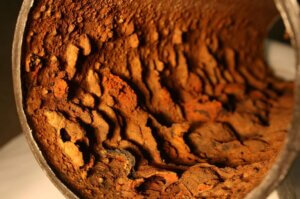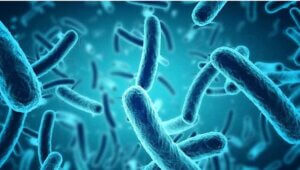Monitoring and Treatment of Closed-Loop Systems
The water in your cooling or heating system can dramatically affect its’ performance. If you regularly monitor and treat the water in the cooling system, it will reduce problems from water deposits.
Effective water treatment is essential to keeping the system operating properly.
If closed loops are not properly treated, it can cause significant damage and can waste water and energy. Issues that can occur include corrosion, scale, and bacteria and micro-organisms.
Failure to perform all of these steps properly with good follow-through, will condemn the system to high operating costs (water and electrical); premature corrosion damage and failure; high unscheduled outages; high repair or replacement costs; potential environmental and health risks; and more often than not, costs of litigation.
Proper monitoring and maintenance of these water systems can help you avoid more-costly repairs to the mechanical systems they cool.
Some of the issues outlined that have to be addressed by water treatment:

Corrosion
Water can be highly corrosive. These systems are subject to the very real and constant threat of corrosion of metallic components, and fouling of system equipment and piping surfaces.
Corrosion can produce significant deposits, and can solubilize metallic components, subsequently releasing dissolved metal ions into solution that can beget further severe corrosion.
The word corrode is derived from the Latin “corrodere”, which means “to gnaw to pieces.”
Monitoring Corrosion
It is essential that there is some form of corrosion monitoring in place to allow the onset of corrosion to be detected as early as possible.
Most heating and cooling systems are continuously in use so it can be difficult to get access to inspect the system, luckily there are a number of methods available to help monitor the effects of corrosion while the systems are operating.
To help monitor corrosion in closed systems we use the HASL online corrosion monitor. This uses a probe which communicates to its own, individual software and displays accurate, graphical information regarding the corrosion rate in the system.
Every few hours data can be sent to a device (either stationed onsite or remote) which allows site engineers to see if any form of corrosion is starting to develop, giving advanced warning and ample time to act and resolve the issue.
With continued advancements being made in the field of corrosion, even more technologies are becoming available to help reduce corrosion costs and the risk of system failure.

Scale
The problem is with the solubility of substances exposed to water. Water contains dissolved minerals and gasses that have limited and temperature-dependent solubility. Once their solubility has been exceeded, these minerals can precipitate onto system surfaces in the form of hard, dense, scale deposits that insulate the surfaces, reducing heat transfer and resulting in poor performance, high power costs, and flow blockage. Dissolved gasses, such as oxygen and carbon dioxide, also increase the natural corrosivity of the recirculating water.

Bacteria and micro-organisms
Warm water is an incubator. Most available system make-up water contains bacteria and other organisms, including algae and protozoa. While these organisms may be present in trace concentrations in the make-up water and the inlet air, they can thrive in the various micro-environments that exist in the warm system water.
Warm recirculating water that is saturated with oxygen from the copious quantities of air used to cool the water provides an ideal environment for aerobic organisms to thrive and multiply. The water that is contained within deposits, as well as that which seeps under them, is usually devoid of oxygen, or is at least very low in oxygen content, and can harbor anaerobic bacteria that will multiply under these conditions.
Many of these organisms generate acidic metabolic byproducts that are extremely corrosive, that can completely alter the chemical environment under deposits, or in small crevices where there is little water flow.
Chemicals
Closed water systems are generally easier to maintain, as the dosage levels of the appropriate corrosion and biocide inhibiting chemicals can be considerably higher than those in an open water system. But without a schedule of testing and analysis – in partnership with a chemical treatment programme, even a closed water system will suffer the problems of corrosion, scale and microbial build-up.
Dosafil
We are also exclusive distributors of DosaFil® thoughout Ireland. The DosaFil® devises are the only devices on the market which combine chemical dosing with constant side stream filtration and continuous air removal.
They provide a compete treatment of your system with no downtime needed.
They have 9 models available which can accommodate pressure ranges from 0 – 20 bar and temperature ranges from 90°C – 130°C.
Conclusion
It is imperative that the water in your closed system is good quality, these systems must be checked on a regular basis to confirm proper treatment level and system integrity.






